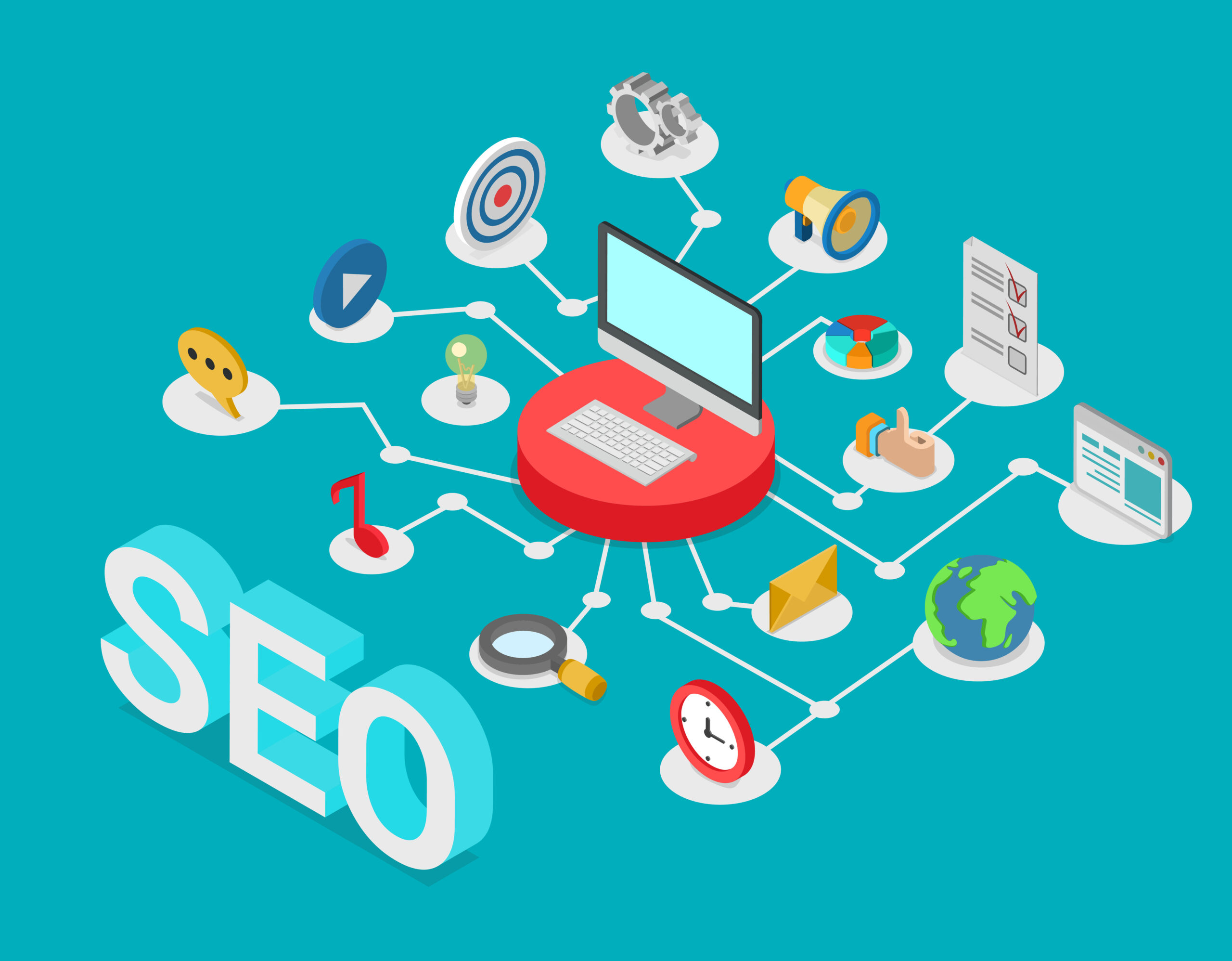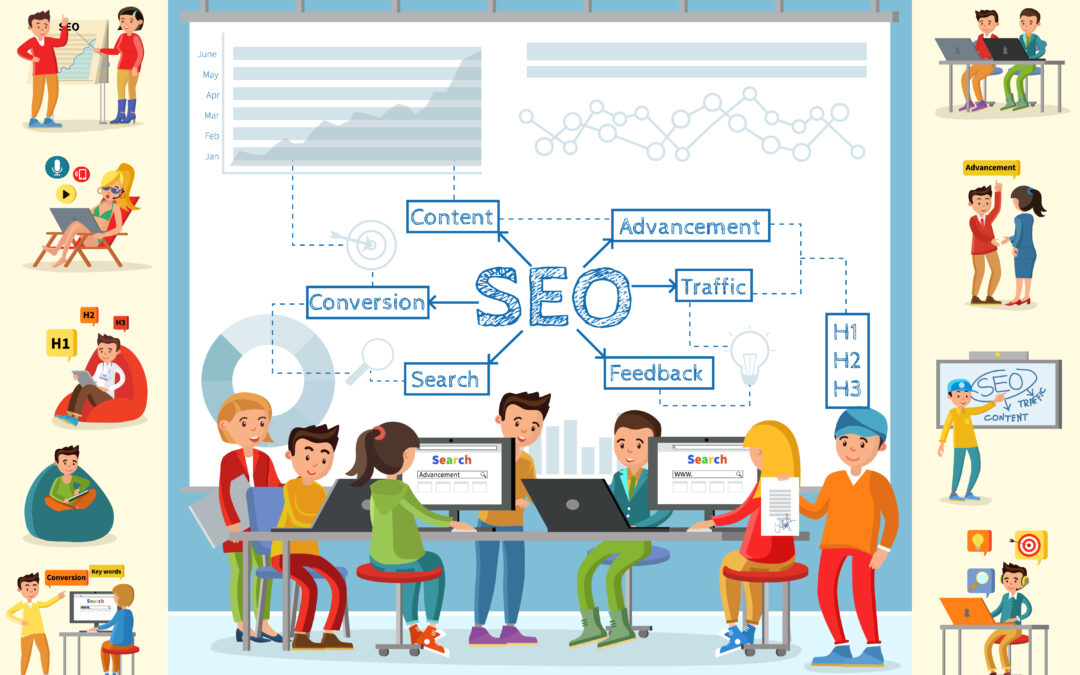Key Takeaways
- Programmatic SEO offers an efficient solution for creating and optimizing a large number of web pages at scale. Automation and data-driven processes significantly reduce the time and resources required, allowing businesses to scale their SEO efforts effectively.
- By leveraging data and automation, programmatic SEO helps maintain a consistent and high-quality standard across web pages. This ensures a better user experience, building trust and reducing errors compared to manual optimization.
- Programmatic SEO provides flexibility to adapt and customize web pages for different scenarios and needs. Whether optimizing for various keywords, locations, or user preferences, the approach allows for customization without compromising efficiency.
- While programmatic SEO offers numerous benefits, it comes with complexities and challenges. Implementers must navigate the technical intricacies, balance automation with human input, and ensure that the quality and uniqueness of content are not compromised.
- Programmatic SEO can be especially valuable in creating and optimizing landing pages at scale. Utilizing keyword research tools, data sources, templates, and structured data, businesses can target a wide range of keywords and queries, enhancing their visibility and click-through rate in search results.
What is Programmatic SEO
Programmatic SEO is a term that refers to the process of creating and optimizing web pages at scale using code, data, and automation. It is a way of applying the principles of SEO (search engine optimization) to a large number of pages that share similar characteristics, such as product pages, category pages, blog posts, etc.
Programmatic SEO is not a new concept, but it has gained more popularity and relevance in recent years due to the increasing demand for high-quality content and the growing complexity of SEO. With programmatic SEO, you can create and update thousands or even millions of pages in a fraction of the time and effort that it would take to do it manually.
Pillars of Programmatic SEO

There are four main pillars of programmatic SEO that you need to consider when implementing this strategy:
- Data: Data is the foundation of programmatic SEO. You need to have access to relevant and accurate data sources that can provide you with the information you need to create and optimize your pages. For example, you can use data from your own website analytics, third-party tools, APIs, databases, etc. to generate content, keywords, meta tags, URLs, etc. for your pages.
- Code: Code is the tool that you use to manipulate and transform the data into web pages. You need to have the skills and knowledge to write and execute code that can perform various tasks, such as crawling, scraping, parsing, templating, rendering, etc. You can use different programming languages and frameworks, such as Python, JavaScript, PHP, etc. to create and optimize your pages.
- Automation: Automation is the process that allows you to run and update your code and pages without manual intervention. You need to have the systems and infrastructure that can support and automate your programmatic SEO workflow, such as servers, cloud services, cron jobs, pipelines, etc. Automation can help you save time, reduce errors, and scale your programmatic SEO efforts.
- SEO: SEO is the goal and outcome of programmatic SEO. You need to have the expertise and best practices to ensure that your pages are aligned with the search engine guidelines and user intent. You need to monitor and measure the performance and impact of your programmatic SEO strategy, such as traffic, rankings, conversions, etc. You also need to keep up with the latest trends and updates in the SEO industry and adjust your programmatic SEO accordingly.
Examples of Programmatic SEO
Programmatic SEO can be applied to various types of web pages and scenarios, depending on your business goals and needs. Here are some examples of programmatic SEO in action:
- E-commerce: E-commerce websites often have a large number of product and category pages that need to be created and optimized for SEO. Programmatic SEO can help you generate and update these pages based on the data from your product catalog, inventory, pricing, reviews, etc. You can also use programmatic SEO to create and optimize landing pages for different keywords, locations, seasons, etc.
- Media: Media websites often have a large number of articles and news stories that need to be created and optimized for SEO. Programmatic SEO can help you generate and update these pages based on the data from your content management system, editorial calendar, social media, etc. You can also use programmatic SEO to create and optimize landing pages for different topics, niches, audiences, etc.
- Travel: Travel websites often have a large number of destination and hotel pages that need to be created and optimized for SEO. Programmatic SEO can help you generate and update these pages based on the data from your travel inventory, booking engine, reviews, etc. You can also use programmatic SEO to create and optimize landing pages for different travel queries, preferences, budgets, etc.
Pros and Cons of Programmatic SEO
Programmatic SEO has many benefits, but it also has some challenges and limitations. Here are some of the pros and cons of programmatic SEO:
Pros
- Efficiency: Programmatic SEO can help you create and optimize a large number of pages in a short amount of time, compared to doing it manually. This can help you save time, resources, and costs, and improve your productivity and profitability.
- Scalability: Programmatic SEO can help you scale your SEO strategy and reach a larger and more diverse audience, compared to doing it manually. This can help you increase your traffic, visibility, and authority, and grow your business and revenue.
- Consistency: Programmatic SEO can help you maintain a consistent and high-quality standard for your pages, compared to doing it manually. This can help you improve your user experience, trust, and loyalty, and reduce your bounce rate and errors.
- Flexibility: Programmatic SEO can help you adapt and customize your pages to different situations and needs, compared to doing it manually. This can help you optimize your pages for different keywords, devices, languages, locations, etc. and enhance your relevance and competitiveness.
Cons
- Complexity: Programmatic SEO can be complex and challenging to implement and manage, compared to doing it manually. You need to have the skills and knowledge to work with data, code, automation, and SEO, and deal with various technical and logistical issues, such as bugs, errors, security, etc.
- Quality: Programmatic SEO can compromise the quality and uniqueness of your pages, compared to doing it manually. You need to ensure that your pages are not duplicated, thin, spammy, or irrelevant, and that they provide value and satisfy the user intent and query.
- Control: Programmatic SEO can reduce the control and creativity that you have over your pages, compared to doing it manually. You need to balance the automation and human input, and avoid over-optimizing or under-optimizing your pages for SEO and users.
How to get started with programmatic SEO: Step by Step Explained in Expert level

If you want to get started with programmatic SEO, here are some steps that you can follow:
Step 1: Define your goals and scope
The first step is to define your goals and scope for your programmatic SEO project. You need to answer questions such as:
- What is the purpose and objective of your programmatic SEO?
- What type of pages do you want to create and optimize with programmatic SEO?
- How many pages do you want to create and optimize with programmatic SEO?
- What are the key performance indicators (KPIs) and metrics that you want to measure and improve with programmatic SEO?
Step 2: Identify and collect your data sources
The second step is to identify and collect your data sources for your programmatic SEO project. You need to answer questions such as:
- What are the data sources that you need to create and optimize your pages with programmatic SEO?
- How can you access and extract the data from these sources?
- How can you clean and organize the data for your programmatic SEO project?
- How can you update and refresh the data for your programmatic SEO project?
Step 3: Write and test your code
The third step is to write and test your code for your programmatic SEO project. You need to answer questions such as:
- What programming language and framework do you want to use for your programmatic SEO project?
- What are the tasks and functions that you need to perform with your code for your programmatic SEO project?
- How can you write and execute your code to create and optimize your pages with programmatic SEO?
- How can you test and debug your code for your programmatic SEO project?
Step 4: Automate and deploy your code
The fourth step is to automate and deploy your code for your programmatic SEO project. You need to answer questions such as:
- What are the systems and infrastructure that you need to support and automate your programmatic SEO project?
- How can you schedule and run your code to create and update your pages with programmatic SEO?
- How can you monitor and manage your code and pages for your programmatic SEO project?
- How can you troubleshoot and fix any issues or errors that may occur with your programmatic SEO project?
Step 5: Monitor and measure your results
The fifth step is to monitor and measure your results for your programmatic SEO project. You need to answer questions such as:
- What are the tools and methods that you need to track and analyze your programmatic SEO project?
- How can you evaluate and report the performance and impact of your programmatic SEO project?
- How can you identify and implement the opportunities and improvements for your programmatic SEO project?
- How can you keep up with the changes and updates in the SEO industry and adjust your programmatic SEO project accordingly?
Landing Pages at Large Scale Strategies

One of the common use cases of programmatic SEO is to create and optimize landing pages at large scale. Landing pages are web pages that are designed to capture the attention and interest of visitors and convert them into leads, customers, subscribers, etc. Landing pages can be created for different purposes, such as promoting a product, service, offer, event, etc.
Programmatic SEO can help you create and optimize landing pages at large scale by using data, code, and automation to generate and update the content, keywords, meta tags, URLs, etc. for each landing page. This can help you target and rank for a wide range of long-tail keywords and queries that are relevant to your niche and audience.
Some of the strategies that you can use to create and optimize landing pages at large scale with programmatic SEO are:
- Use keyword research and analysis tools: You can use tools such as Google Keyword Planner, SEMrush, Ahrefs, etc. to find and analyze the keywords and queries that your potential customers are searching for. You can also use tools such as AnswerThePublic, AlsoAsked, etc. to find and analyze the questions and topics that your potential customers are interested in. You can use these data to create and optimize your landing pages for different keywords and queries.
- Use data sources and APIs: You can use data sources and APIs from your own website or third-party platforms to create and optimize your landing pages with dynamic and relevant content. For example, you can use data from your product catalog, inventory, pricing, reviews, etc. to create and optimize your landing pages for different products, categories, features, etc. You can also use data from platforms such as Google Maps, Yelp, TripAdvisor, etc. to create and optimize your landing pages for different locations, attractions, activities, etc.
- Use templates and variables: You can use templates and variables to create and optimize your landing pages with consistent and customized content. For example, you can use templates to define the structure and layout of your landing pages, such as the headline, subheading, body, call to action, etc. You can also use variables to insert the specific content and keywords for each landing page, such as the product name, category, feature, location, etc. You can use code to generate and update the templates and variables for your landing pages based on the data sources and APIs.
- Use schema markup and structured data: You can use schema markup and structured data to create and optimize your landing pages with rich and informative content. Schema markup and structured data are code snippets that help search engines understand and display the content and context of your landing pages. For example, you can use schema markup and structured data to add information such as the product name, price, rating, availability, etc. to your landing pages. This can help you enhance your visibility and click-through rate in the search results.
Ready to Start Your Programmatic SEO Journey with Crongenix?
If you are ready to start your programmatic SEO journey and create and optimize web pages at scale, you can contact us at Crongenix. We are a team of experts in programmatic SEO, data, code, automation, and SEO. We can help you design and implement a programmatic SEO strategy that suits your business goals and needs. We can also help you monitor and measure the results and impact of your programmatic SEO strategy and provide you with insights and recommendations for improvement.
To get in touch with us, you can or email us at support@crongenix.com. We will get back to you as soon as possible and offer you a free consultation and quote for your programmatic SEO project.
FAQs
Here are some frequently asked questions and answers about programmatic SEO:
- What is the difference between programmatic SEO and regular SEO?
Programmatic SEO and regular SEO are both methods of creating and optimizing web pages for search engines and users. The main difference is that programmatic SEO uses code, data, and automation to create and optimize web pages at scale, while regular SEO uses manual or semi-automated processes to create and optimize web pages individually or in small batches.
- What are the benefits of programmatic SEO?
Some of the benefits of programmatic SEO are:
- It can help you create and optimize a large number of web pages in a short amount of time, compared to regular SEO.
- It can help you scale your SEO strategy and reach a larger and more diverse audience, compared to regular SEO.
- It can help you maintain a consistent and high-quality standard for your web pages, compared to regular SEO.
- It can help you adapt and customize your web pages to different situations and needs, compared to regular SEO.
- What are the challenges and limitations of programmatic SEO?
Some of the challenges and limitations of programmatic SEO are:
- It can be complex and challenging to implement and manage, compared to regular SEO.
- It can compromise the quality and uniqueness of your web pages, compared to regular SEO.
- It can reduce the control and creativity that you have over your web pages, compared to regular SEO.
- What are the skills and tools that you need for programmatic SEO?
Some of the skills and tools that you need for programmatic SEO are:
- Data skills and tools: You need to have the skills and tools to access, extract, clean, organize, update, and refresh the data that you need to create and optimize your web pages. For example, you can use tools such as Google Sheets, Excel, SQL, etc. to work with data.
- Code skills and tools: You need to have the skills and tools to write and execute code that can perform various tasks, such as crawling, scraping, parsing, templating, rendering, etc. to create and optimize your web pages. For example, you can use tools such as Python, JavaScript, PHP, etc. to work with code.
- Automation skills and tools: You need to have the skills and tools to automate and run your code and web pages without manual intervention. For example, you can use tools such as servers, cloud services, cron jobs, pipelines, etc. to work with automation.
- SEO skills and tools: You need to have the skills and tools to ensure that your web pages are aligned with the search engine guidelines and user intent. For example, you can use tools such as Google Search Console, Google Analytics, SEMrush, Ahrefs, etc. to work with SEO.
- How can I get started with programmatic SEO?
If you want to get started with programmatic SEO, you can follow these steps:
- Define your goals and scope for your programmatic SEO project.
- Identify and collect your data sources for your programmatic SEO project.
- Write and test your code for your programmatic SEO project.
- Automate and deploy your code for your programmatic SEO project.
- Monitor and measure your results for your programmatic SEO project.
Alternatively, you can contact us at Crongenix and we can help you with your programmatic SEO project.

